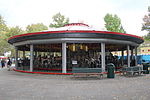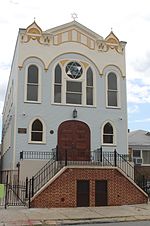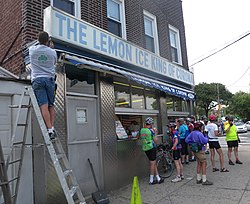New York Hall of Science
1964 New York World's Fair1964 establishments in New York CityAerospace museums in New York (state)Association of Science-Technology Centers member institutionsChildren's museums in New York City ... and 8 more
Corona, QueensFlushing, QueensFlushing Meadows–Corona ParkMuseums in Queens, New YorkNew York Hall of ScienceScience museums in New York CityTransportation museums in New York CityUse mdy dates from August 2014

The New York Hall of Science, also known as NYSCI, is a science museum located in Flushing Meadows-Corona Park in the New York City borough of Queens, in the section of the park that is in Corona. It occupies one of the few remaining structures from the 1964 New York World's Fair, and is New York City's only hands-on science and technology center. The more than 400 hands-on exhibits focus on biology, chemistry, and physics.
Excerpt from the Wikipedia article New York Hall of Science (License: CC BY-SA 3.0, Authors, Images).New York Hall of Science
111th Street, New York Queens
Geographical coordinates (GPS) Address Phone number Website External links Nearby Places Show on map
Geographical coordinates (GPS)
| Latitude | Longitude |
|---|---|
| N 40.7472 ° | E -73.8517 ° |
Address
New York Hall of Science
111th Street 47-01
11368 New York, Queens
New York, United States
Open on Google Maps










